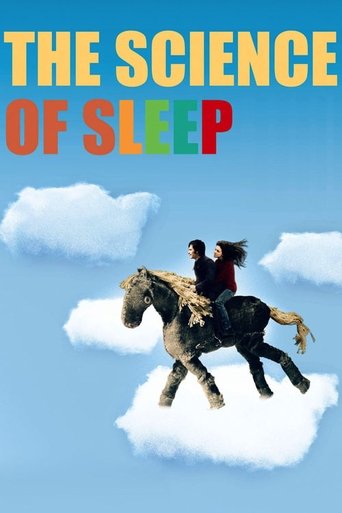Cierra los ojos. Abre tu corazón.
"La Science des rêves" (2006), a whimsical and surreal cinematic journey, is a testament to the creative genius of director Michel Gondry. Produced by Partizan Films and Gaumont in France and Italy, this film delves deep into the blurred lines between dreams and reality. The protagonist, Stéphane, portrayed with endearing vulnerability by Gael García Bernal, navigates a world where his vivid dreams often spill into his waking life, creating a tapestry of confusion and enchantment. The film's unique visual style, characterized by handmade special effects and a playful use of stop-motion, mirrors the protagonist's internal struggle and adds a layer of charm that is distinctly Gondry. At its core, "La Science des rêves" is an exploration of the human condition, particularly the longing for connection and the fear of rejection. Stéphane's relationship with his neighbor, Stéphanie, played by Charlotte Gainsbourg, serves as the emotional anchor of the film. Their interactions, often awkward and tinged with a sense of missed opportunities, resonate deeply with anyone who has ever grappled with the complexities of human relationships. The film's narrative structure, which seamlessly weaves between dream and reality, underscores the idea that our dreams can both liberate and imprison us, depending on how we choose to engage with them. The film's setting in a quaint Parisian apartment building adds a layer of intimacy and nostalgia, enhancing the dreamlike quality of the story. The use of French and English dialogue, along with the inclusion of Italian elements, reflects the film's international production and adds to its universal appeal. The soundtrack, featuring original music by Jean-Michel Bernard, perfectly complements the film's whimsical tone, further immersing the audience in Stéphane's surreal world. "La Science des rêves" is not just a film; it's an experience that invites viewers to embrace the absurdity and beauty of life's dreamlike moments. In conclusion, "La Science des rêves" stands out as a poignant and inventive piece of cinema that showcases Michel Gondry's unparalleled ability to blend reality with fantasy. The film's heartfelt exploration of love, loneliness, and the power of imagination makes it a timeless work that continues to captivate audiences. Through its innovative storytelling and heartfelt performances, "La Science des rêves" invites us to ponder the thin veil that separates our dreams from our reality, encouraging us to find joy and meaning in the spaces in between.
Año2006
Página principal
Presupuesto6000000$
Duración106 minuto
Ingresos9524340$
GénerosComediaDramaFantasía
Países de producciónFranceItaly



